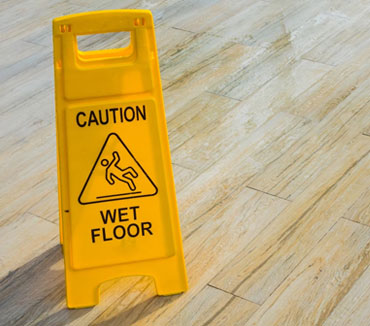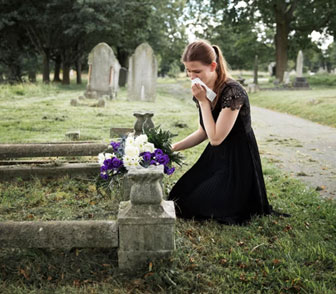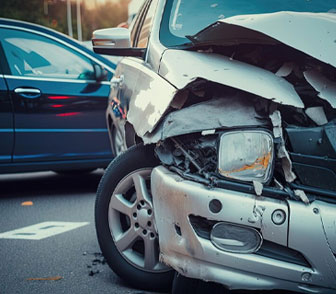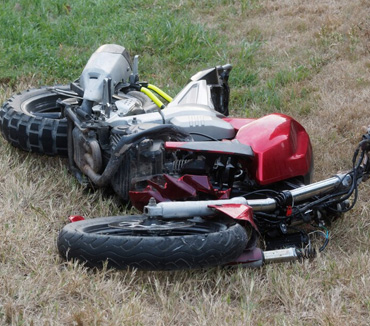Should You Carry Uninsured Motorist Coverage in California?
California law requires every driver to carry liability insurance to cover injuries and property damage. A driver who fails to comply with insurance laws is subject to penalties include fines and suspension of their license and vehicle registration.
Uninsured drivers also create significant risk for other people on the road. They generally have fewer assets and less income than drivers with insurance. This means that someone injured by an uninsured or under-insured driver may be unable to collect damages from the other driver for medical costs, lost wages, car repair bills, pain and suffering and other losses after a car accident in California.
California’s Insurance Requirements
California law requires all drivers to maintain a minimum level of auto liability insurance. Liability insurance compensates people other than the policyholder should the policyholder be at fault for an accident. It’s against the law to drive in California without the minimum coverage. As of 2022, the minimum coverage required in California is as follows:
- $15,000 for bodily injury to one person
- $30,000 for bodily injury per accident (multiple people)
- $5,000 for property damage
How Uninsured Motorist Coverage Works
Uninsured / under-insured motorist (UM/UIM) coverage is optional insurance coverage that can be added to an auto insurance policy in California. UMC/UIM coverage pays when another driver is at fault but either has no insurance at all, or does not carry enough insurance to cover the injured party’s medical bills and other losses.
Uninsured motorist coverage is one way to protect yourself from this situation. Such coverage kicks in whenever the other person in an accident lacks insurance and is also at fault. Someone who has uninsured motorist coverage can drive with less worry that other drivers aren’t complying with their legal obligations. Coverage limits are an important consideration for anyone who buys insurance.
Uninsured motorist coverage needs to be robust enough to cover property damage (i.e., damage to your car) as well as the expenses that come from injuries to the driver and passengers. An insurance company can offer guidance about how much uninsured motorist coverage is appropriate for a given driver’s circumstances.
What is Under-Insured Motorist Coverage?
Even when California drivers do pay for insurance, they often elect coverage at the minimum amount. These amounts are often too low to cover damages for all but minor fender benders. They are particularly inadequate in cases of serious accidents when there are multiple occupants in the car.
Under-insured motorist coverage treats the other driver as uninsured for damages in excess of the at-fault driver’s policy limits up to the policy limit of the driver with the under-insured motorist coverage.
What to Do If Hit By an Uninsured Driver in California
Nearly every state in the US requires its drivers to own at least a minimum amount of liability coverage. Still, there are those who don’t buy even that much car insurance—despite it being against the law. So what happens when one of them hits your vehicle?
Normally, when you get in a car accident, the insurance of the at-fault driver pays for the damage. It’s more complicated, when someone without insurance hits your vehicle and damages it or injures you or your passengers.
Option One: Suing the Uninsured Driver
You have the option of suing the other driver directly to go after their personal assets if they caused the accident. The problem with this solution is people who do not maintain even the minimum required liability insurance likely have no assets of value that you can go after unless their policy accidentally lapsed. The best solution is filing a claim against your own insurance policy.
Option Two: Uninsured/Under-Insured Motorist Coverage
When you are involved in a car accident with someone who doesn’t have insurance, you may need to turn to your own policy to cover your damages, assuming you have uninsured and under-insured motorist (UIM) coverage. This important type of coverage protects you if you are involved in an accident with someone who doesn’t have insurance and is found to be at fault — a very real risk while driving in Los Angeles.
What to Do When Involved in Any Accident
- Call the Police
Even in a minor accident, it is important to file a police report for the accident, which will be required by your insurance provider. Under California law, there must have been contact between the other driver’s vehicle and your own if you make a hit-and-run claim. You will also need to file an SR-1 form with the DMV and an SR-19 form to prove the other driver was uninsured. While your insurance company may not require this last step, it’s important to protect yourself.
- Trade Information With the Other Driver
While you wait for the police to arrive, you should exchange information with the other driver. Try to get as much information as you can about the other driver and his or her vehicle, including the driver’s name, telephone number, email address and mailing address, as well as the make, model, color and license number of the vehicle. Also take down the names and contact information of any witnesses who may have seen the accident take place.
Assuming that everyone is properly insured, you and the other driver should also exchange insurance information at this time. If the other driver is uninsured, this is when you are likely to find out. However, even if the other driver shows you an insurance card, you should still take down his or her information in case the policy is expired, canceled or in someone else’s name.
- Document the Scene
Use your phone to take pictures of the vehicles involved in the accident and the scene where the accident occurred. Take photos of any street signs or landmarks in the area.
- Get Medical Treatment for Your Injuries
Even if you feel like your injuries are not serious, you should still be examined by a doctor. Often injuries caused by car accidents aren’t immediately apparent. Even in crashes involving minor impact, you can still sustain a serious injury. Go to the emergency room or see your primary care provider as soon as you can.
Take pictures after an accident to provide documentation of the scene and any damage that has occurred, including:
- Vehicle damage
- The location of the crash
- Skid marks, if there are any
- Any other details from the scene that may be relevant
- Call Your Insurance Company
As soon as you can after an accident with an uninsured driver in California, call your insurance company to notify them of the crash. Depending on your policy, you may have purchased uninsured motorist coverage, which provides you with extra protection in the event of a crash with an uninsured driver. Unlike some states, however, California law does not require drivers to carry this coverage, so you will need to check your policy details to find out if you are covered.
Do You Need to Hire An Attorney to Handle an Uninsured or Under-Insured Motorist Claim?
No, you do not NEED to hire a lawyer, but you SHOULD. Like any automobile insurance claim, a person does not need to have an attorney to advance an uninsured or under-insured motorist claim. A person can try to do it themselves. He or she can try to figure out the process and the laws that apply. However, that person will never know what his or her claim is really worth or how best to present it to make sure the most money is obtained. By the time, one realizes that he or she lacks the experience to obtain full compensation and deal with the insurance adjuster; he or she will likely have made mistakes with the claim. This will likely result in receiving less for the injury claim.
Once you make an uninsured or underinsured motorist claim, your own insurance company will now be at odds with you. The insurance company will have the opposite goal in mind. While you are trying to obtain the most money possible for your injuries, pain and suffering—your insurance company is trying to settle your claim for the lowest amount possible.
Should You Speak with an Attorney?
Thousands of people die in car accidents each year, which is why the damage sustained in these crashes should never be taken lightly. If you were harmed in a crash, your first step should always be to call 911 and ask for medical attention. Once you have been properly taken care of, make sure you contact an experienced personal injury attorney for help attaining justice and compensation for your injuries.
Issues involving insurance and uninsured drivers can be complicated. That is why you should contact an experienced personal injury attorney if you have been injured by an uninsured motorist. Call us now at 1-877-241-9554 to learn more about your options. A free consultation is just a phone call away.
Request A
Free Consultation
Fields Marked With An ” *” Are Required










